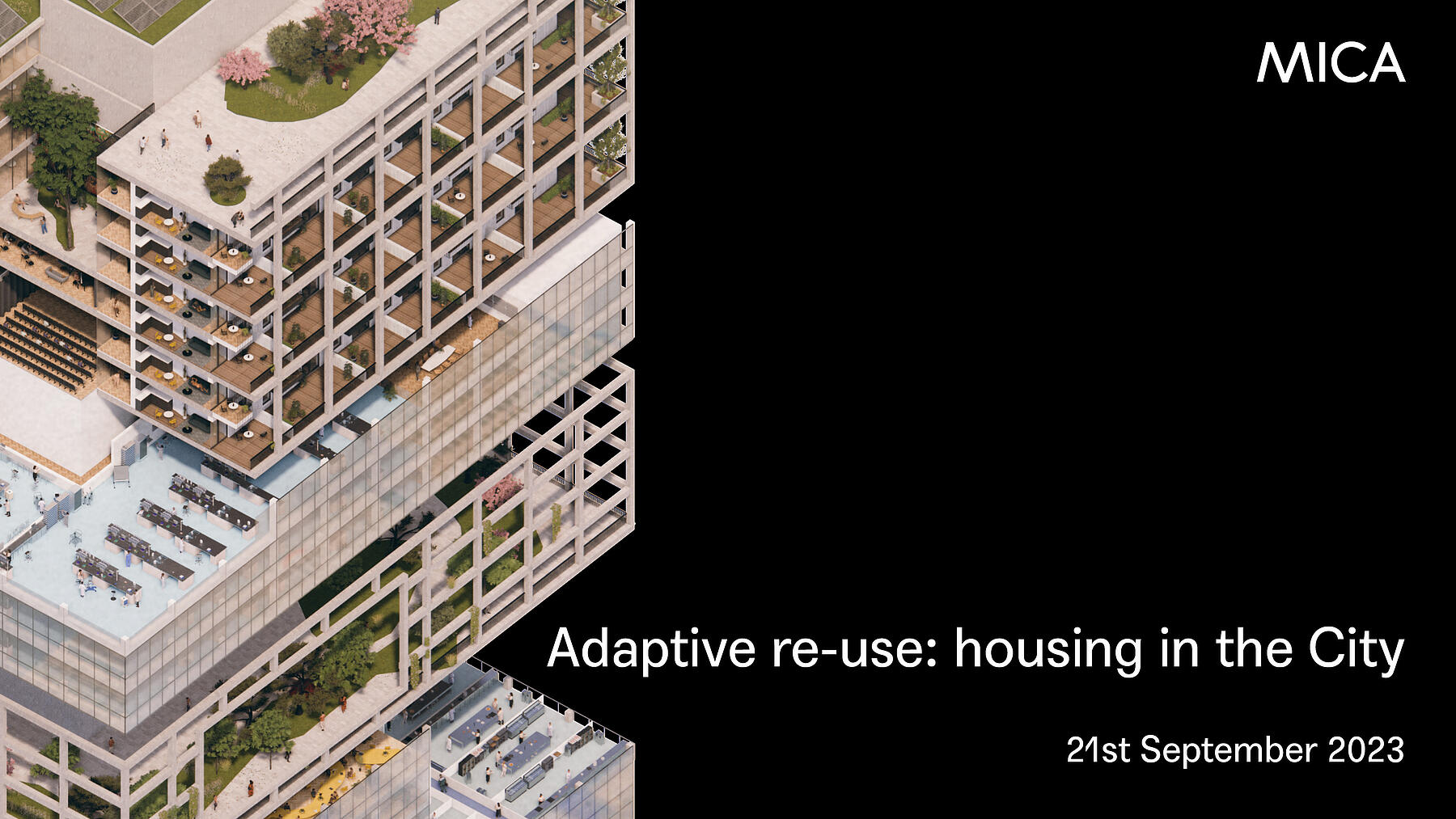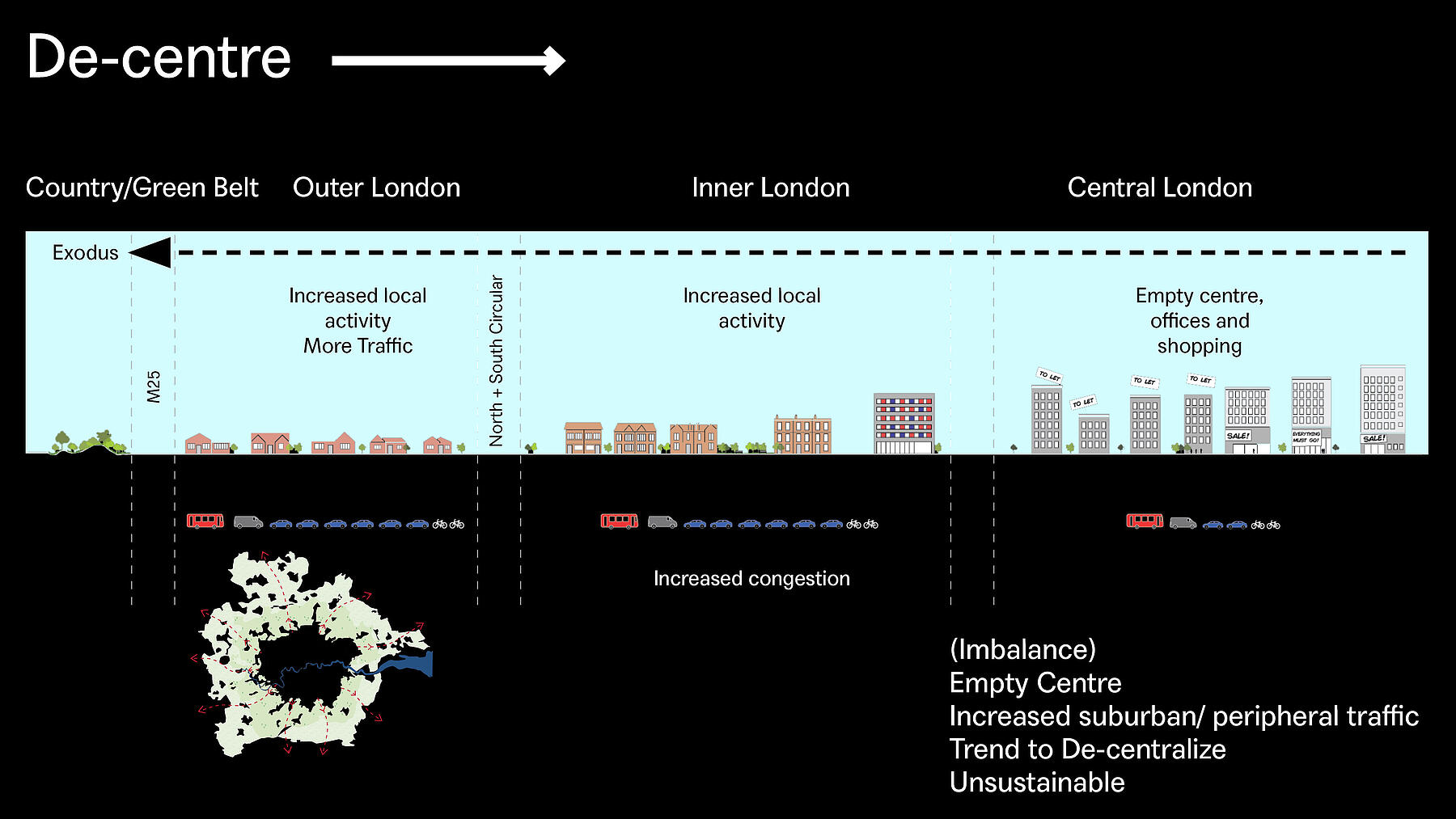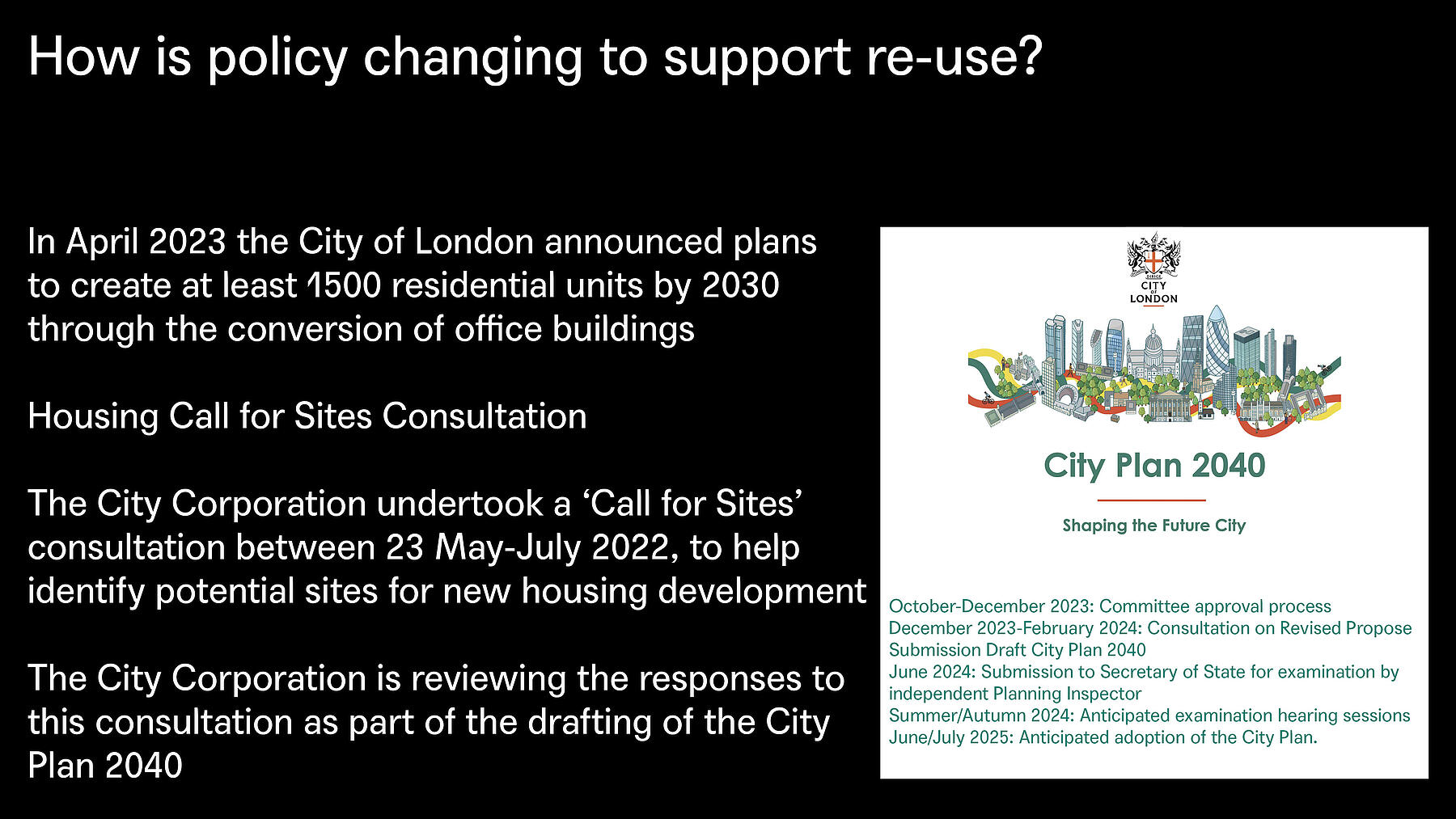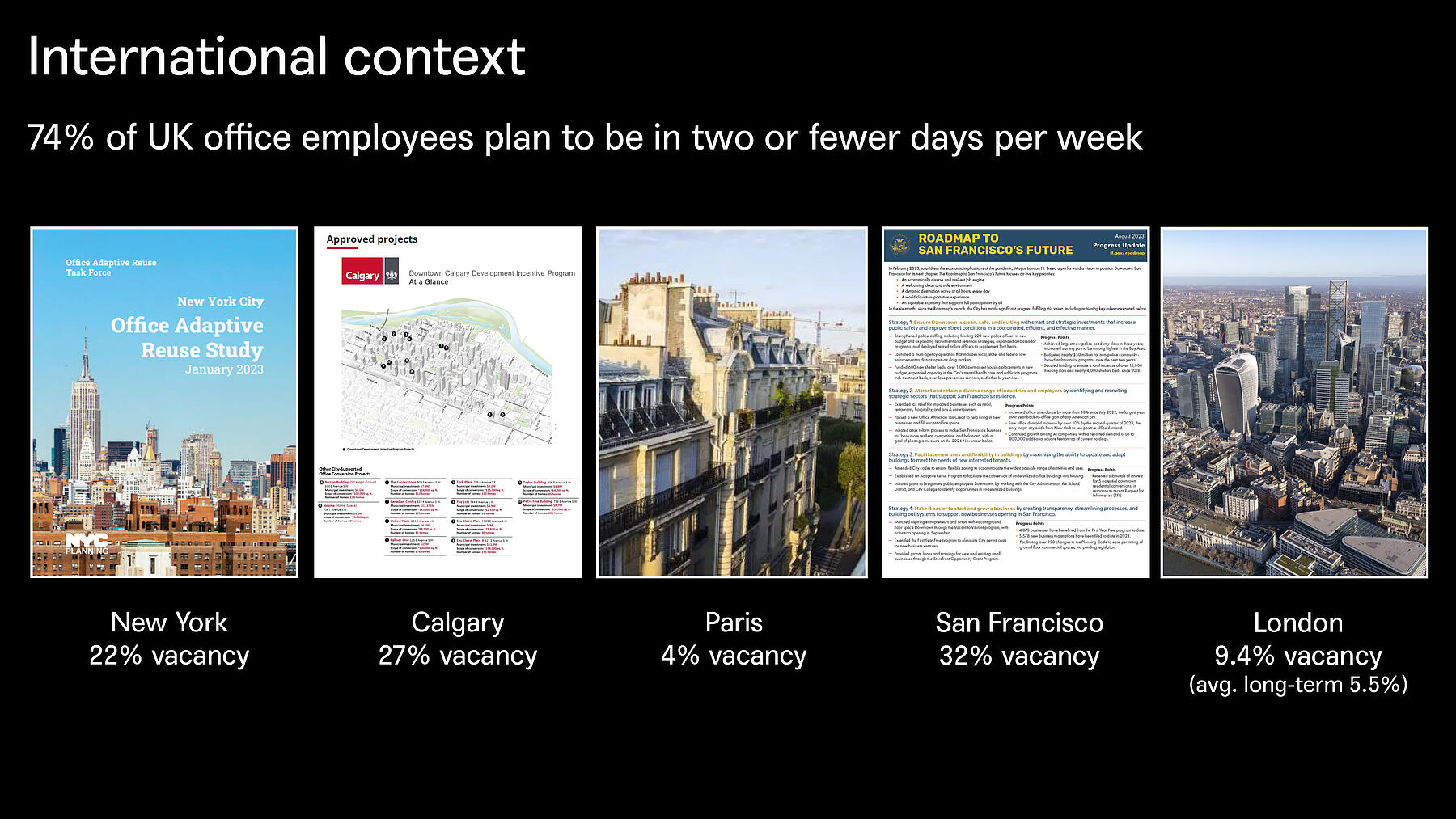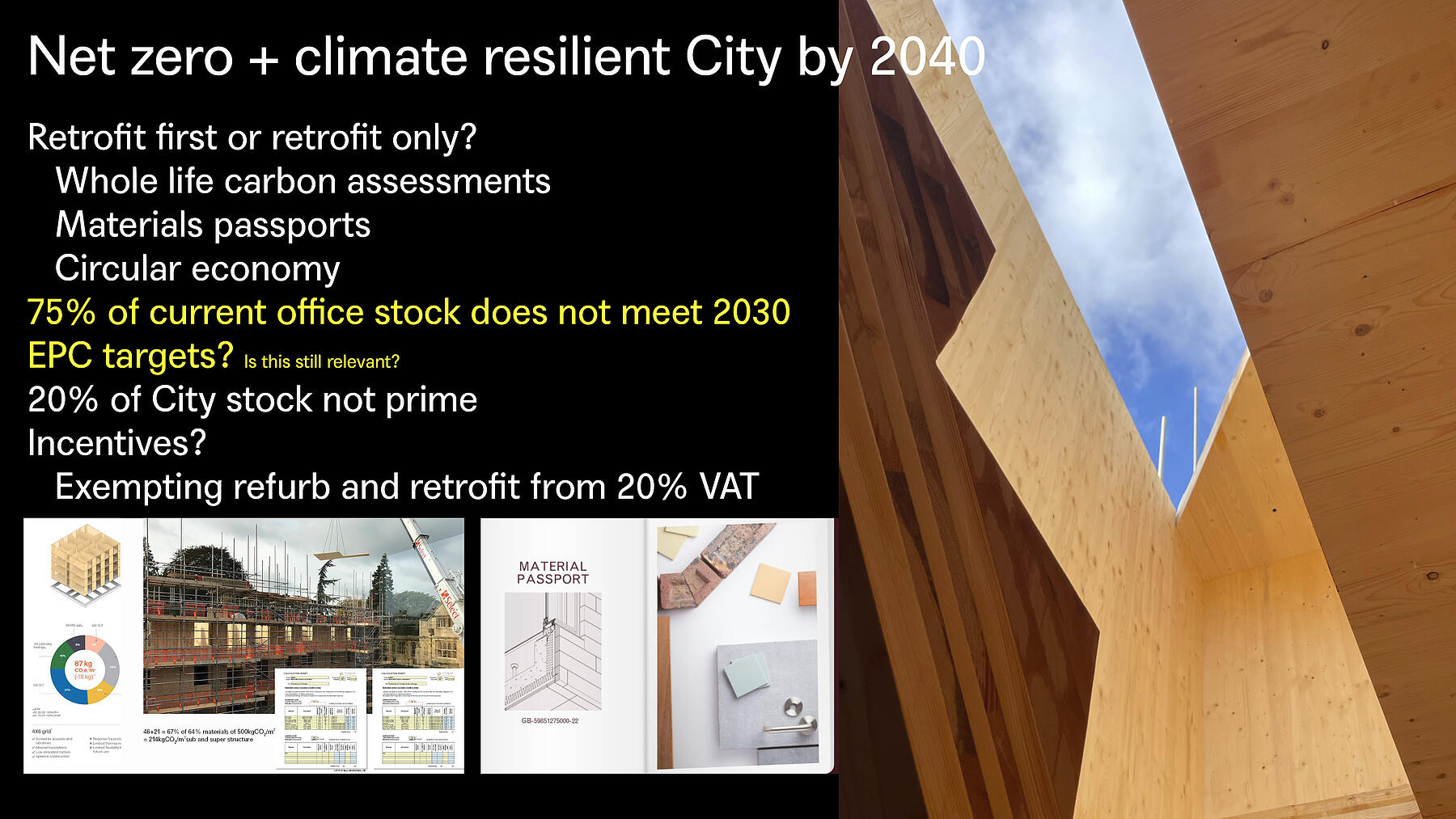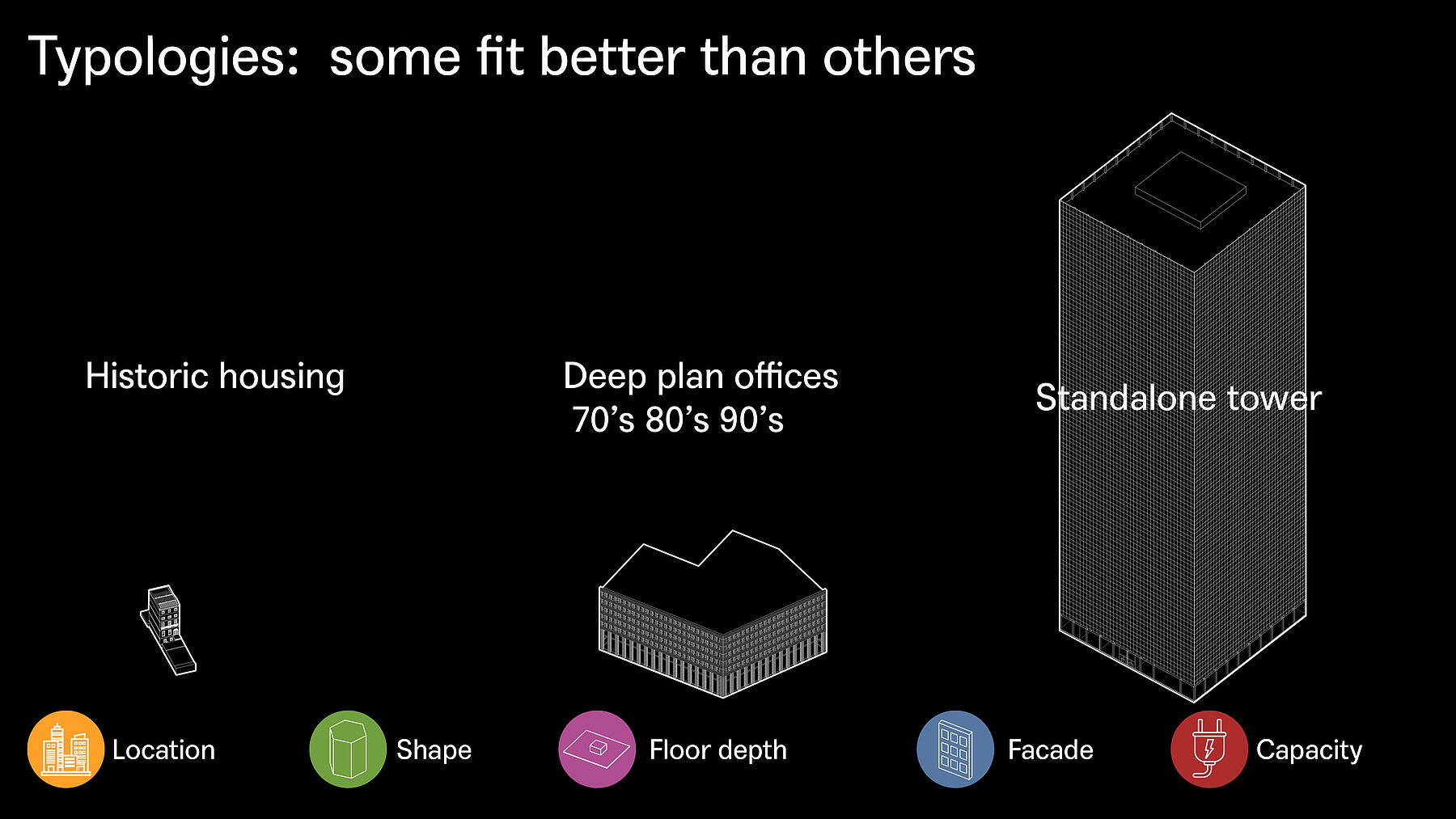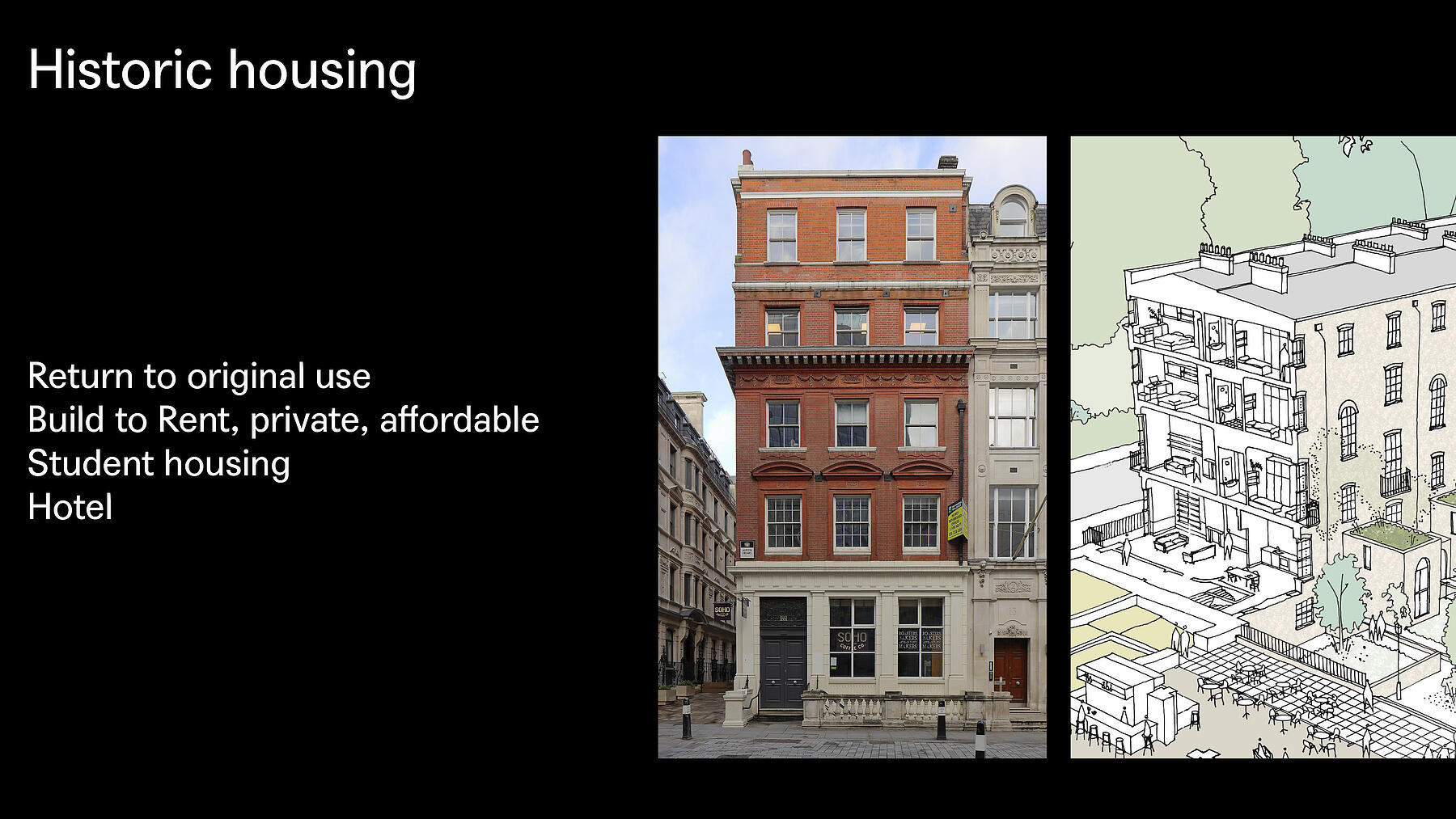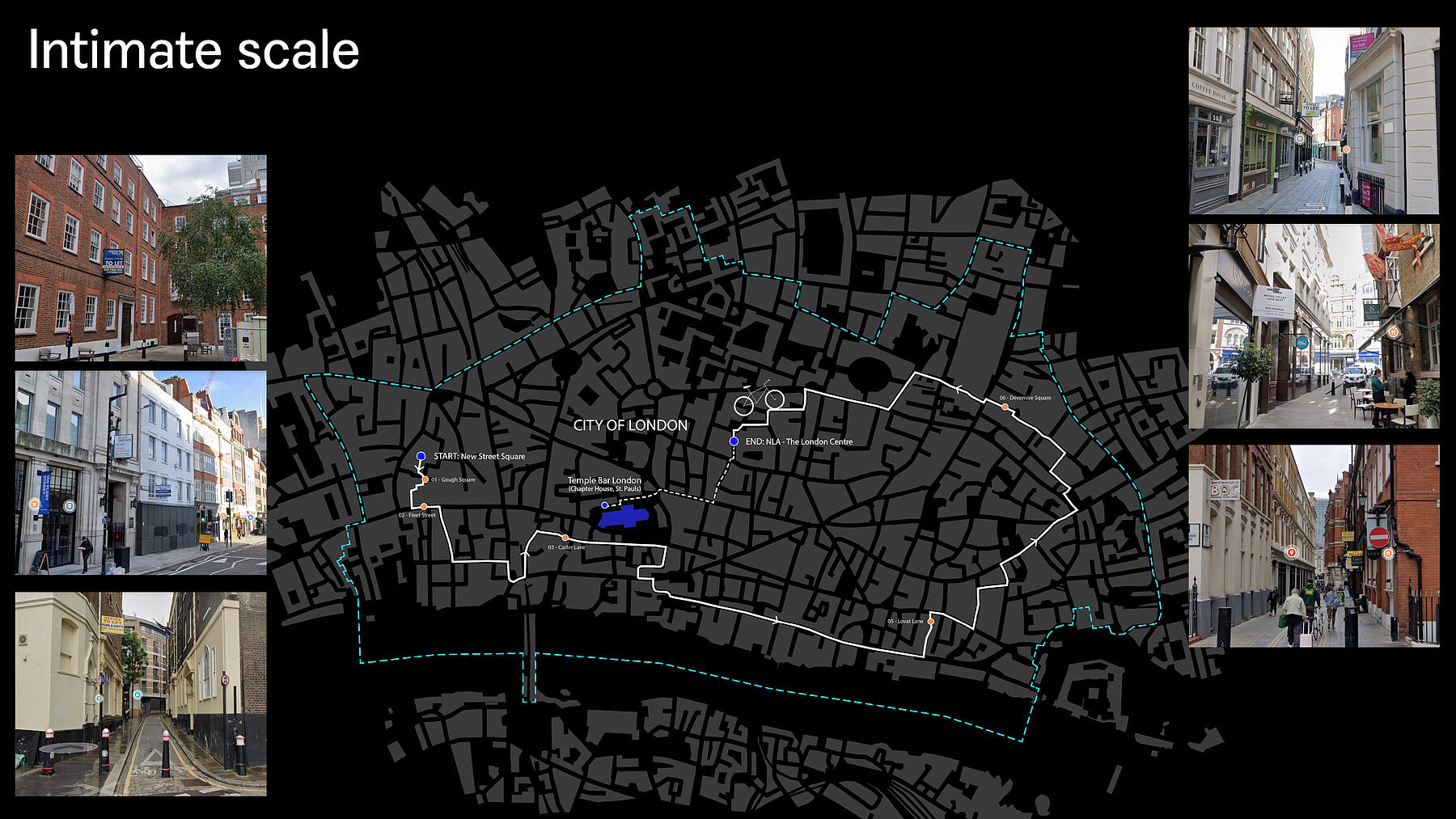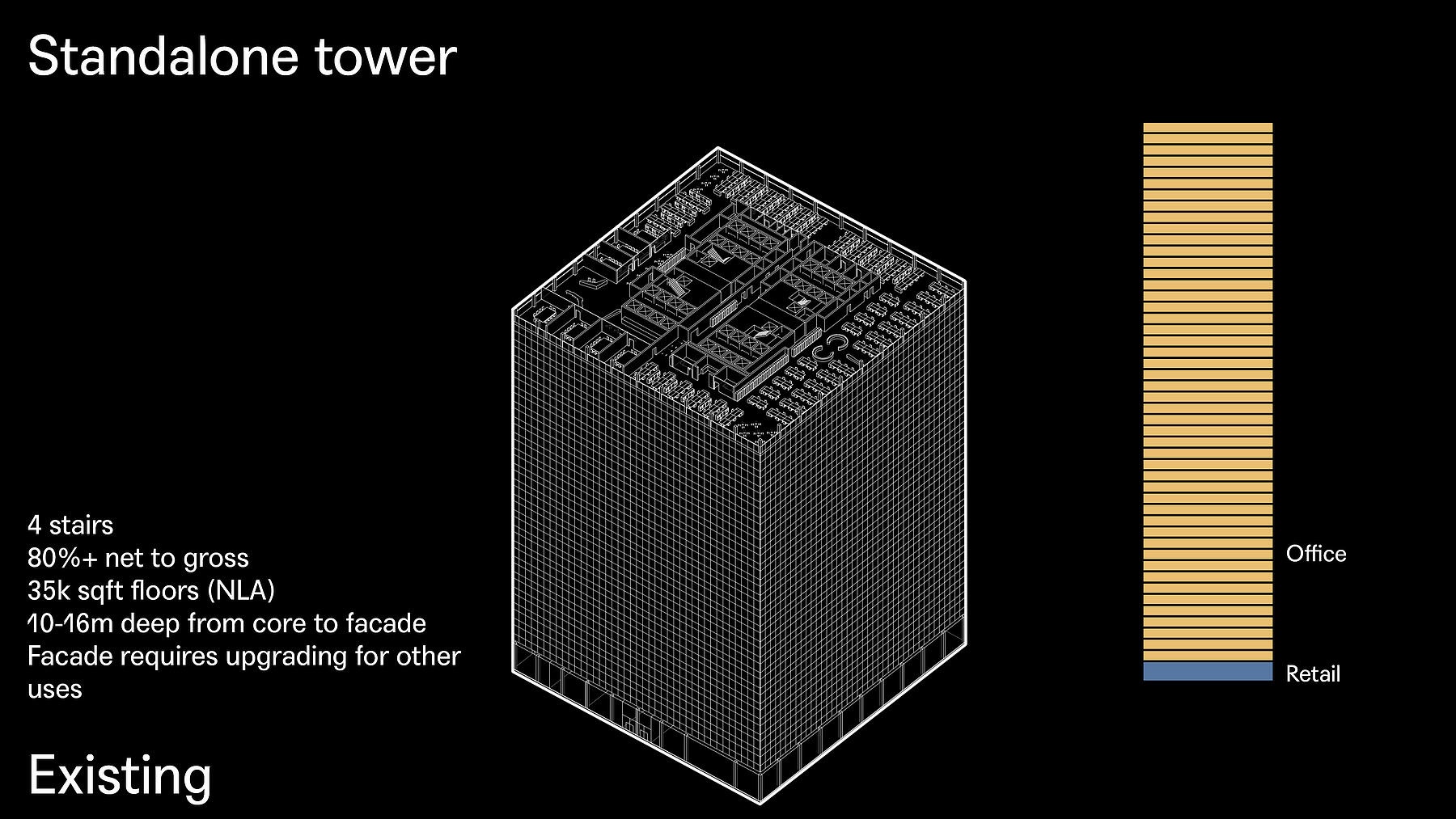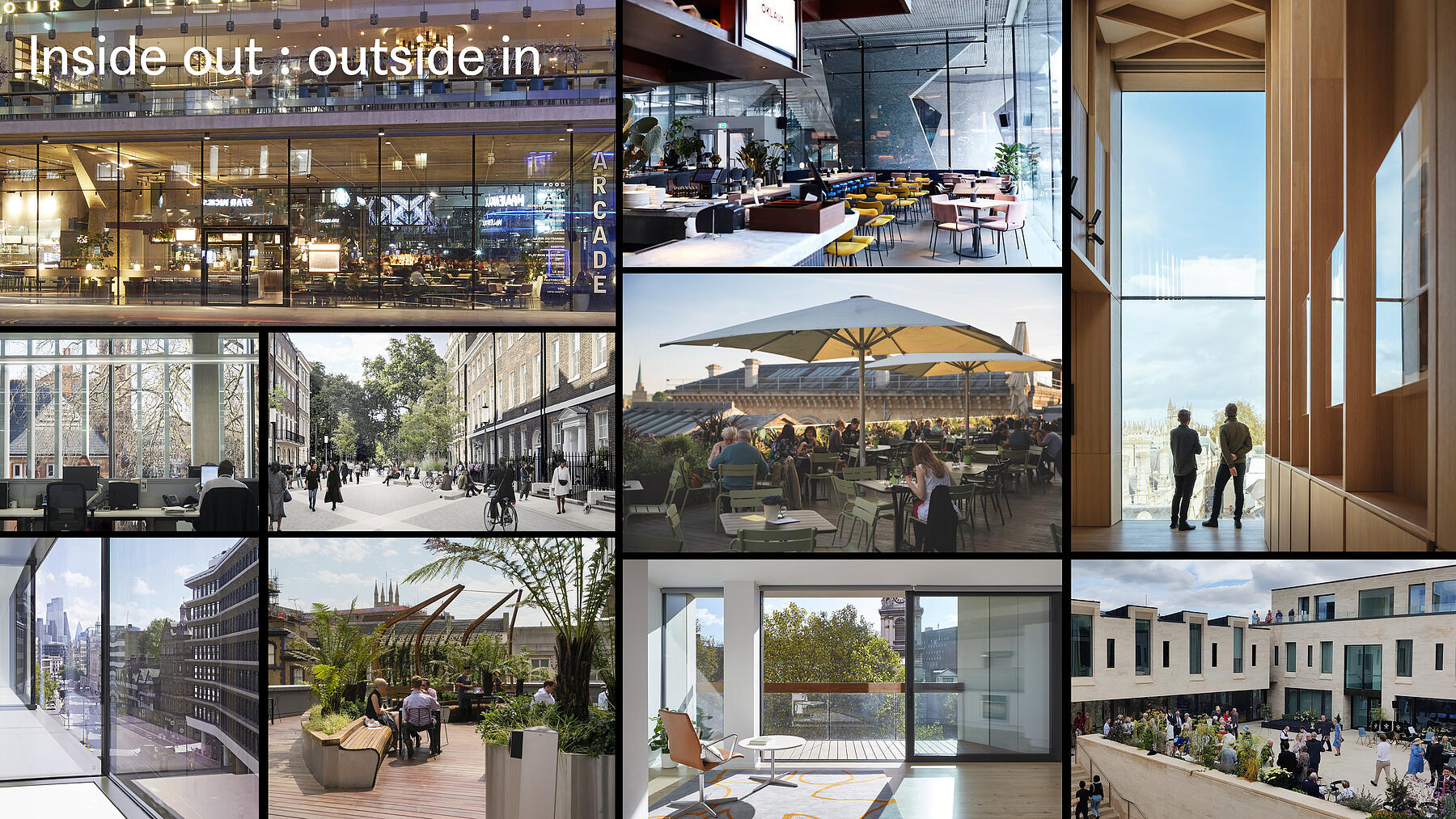Living in the City : More housing in London's square mile?
Living in the City : More housing in London's square mile?
Gavin Miller's takeaways from a recent New London Architecture Breakfast talk on Adaptive re-use, stranded assets and housing delivery at The London Centre
MICA recently attended and provided the discussion material for an exclusive breakfast event hosted by Peter Murray and NLA on the potential for more housing in the City of London. With the new City 2040 plan about to be released shortly, attendees were keen to understand what changes there are in this respect. The expectation of there potentially being an element of repositioning, in light of so called “stranded assets” fed questions about the potential for uses other than office, such as Build to Rent and student housing, in addition to market and affordable housing.
At the session was Rob McNicol, Assistant Director, Policy and Strategy City of London Planning, and author of the emerging City Plan. Key people from Get Living, Pocket Living, Greystar, HUB, Canary Wharf, Global Apt Advisors, Hadley Property Group, and Mount Anvil also attended, as well as Martha Grekos, Planning lawyer and City of London Alderwoman.
The session started with Rob McNicol outlining the emerging position, and the political background. A precis of this might be that an increase in housing numbers was going to be allocated, but mainly in or near the existing currently designated areas, and in combination with a larger increase in office space, thus broadly maintaining the current office / housing split. This suggests no major shift and a view that there is still a demand for offices, notwithstanding the perception of “stranded assets” and evolving living and workplace patterns.
MICA then gave a presentation outlining the wider context of city centre office vacancies and where The City of London sits. At 9% is it low compared to San Francisco at 32% and Manhattan at 22%, but more than Paris at 4%.We looked at the peripheral distribution of housing in the City and then studied three typologies for possible conversion, one relatively straightforward, two more challenging. Returning original Georgian and Victorian houses back to their original use seems a potentially easy win, and there is more than you think of this type of fabric in the City. The more challenging options are the deep floor plate offices of the 80’ and 90’s, and deep floor plate standalone towers. We didn’t tackle the shallower floorplate 60’s offices, as they are generally easier to work with in this respect.
Recognising the inefficiencies often inherent in converting these buildings to different uses, and the current market uncertainty of what actually works, and for illustrative purposes, we showed these buildings converted to mixed rather than single use. This was on the basis that potentially there is benefit in being greater than the sum of its parts, and that the collective value might offset some of the inefficiencies. Nevertheless, it was recognised there are challenges. The interventions required are often expensive and unviable, such as full façade reglazing to meet residential window loads, or in deep plan buildings extensive “cut and carve”, or setting back facades to create external balconies. The discussion then ranged from pleas for Build to Rent to removal of VAT on existing buildings.
Whilst an empty city centre is an unsavoury and unsustainable prospect, and the diversification of uses to offset this a positive one, in the City it doesn’t seem as simple as this. Vacancy is still relatively low. There is improvement in stock quality happening and the counter view is that the assets really aren’t that strained and that by 2028 we’ll all be back in the office, business as usual, as if nothing ever happened…
Whatever the outcome, it feels like something has to give a bit, however maybe not in the City of London …at least not for now..

